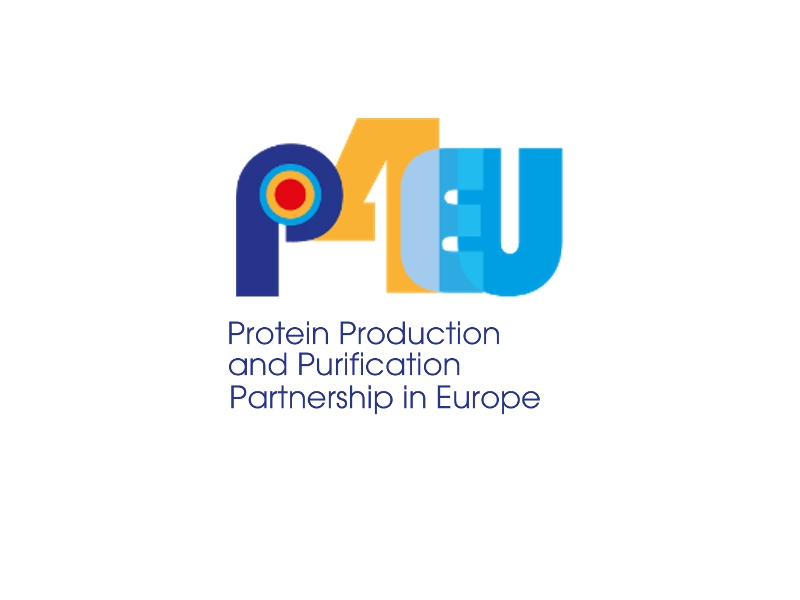Dr Steven Harborne to Present at P4EU Meeting
Dr Steven Harborne is presenting at the 16th meeting of the P4EU which will be held virtually on Monday 16th November at 11:00 GMT.
The title of Steve’s talk is “Measuring coronavirus Spike:ACE2 binding affinity and kinetics using the Biacore 8K”.
Abstract:
Peak Proteins is assisting in the fight against COVID-19 by supplying protein reagents for coronavirus research and supporting several collaborations. The interaction between the 2019-nCoV viral spike (S) protein and the human angiotensin converting enzyme (ACE2) is a critical step in the process of viral infection (1–3). Our challenge was to rapidly express and purify these protein components and validate that they have relevant physiological function.
All proteins were purified from HEK293 cells as a single species as shown by SDS-PAGE and size exclusion chromatography. In collaboration with Cytiva, and through access and training on the Biacore 8K in the Alderley Park Open Access Lab, we were able to verify that our recombinantly expressed and purified coronavirus Spike proteins are folded and active, and can be used to develop or validate new assays.
We measured binding of five different Spike proteins to the extracellular domain of the ACE2 receptor; Fc tagged trimeric 2019-nCoV S protein (Spike1), trimeric 2019-nCoV S protein (Spike2), 2019-nCoV S1 domain (Spike3), 2019-nCoV receptor binding domain (RBD1) and Fc tagged trimeric SARS-CoV S protein (SARS1). During assay development, we trialled the immobilisation of spike constructs on Ni NTA or Anti-His Ab surfaces using the His tags, or immobilisation onto a Protein A surface using the Fc tag. Furthermore, the reversed assay orientation in which biotinylated ACE2 was captured on a streptavidin-coated surface was also trialled.
In all assay setups we were able to confirm a specific binding interaction between spike constructs and ACE2. Furthermore, good agreement between the expected maximal signal compared to observed signal confirmed ACE2 and spike constructs were folded and highly active for binding. However, we observed significant avidity effects when biotinylated ACE2 was immobilised and multivalent spike constructs were used as analytes. Furthermore, ACE2 had a tendency to interact non-specifically with Ni NTA or Protein A coated surfaces. Therefore, the optimal assay setup was determined to be Spike constructs immobilised to an Anti-His Ab surface and ACE2 used as an analyte in multi-cycle kinetic measurements.
We measured a weaker affinity of SARS1 for ACE2 than Spike1 (225 nM compared to 91 nM, respectively). SARS1 displayed a faster association rate with ACE2, but also a faster dissociation rate, resulting in a net weaker interaction than the Spike1:ACE2 interaction. The stronger interaction between 2019-nCoV S protein and ACE2 is postulated as one of the reasons why 2019-nCoV is more infections than SARS (1–3).
Use of Biacore affinity binding studies have allowed us to validate the correct fold and function of our spike and ACE2 proteins. Furthermore, we have developed a robust assay for testing the interaction between coronavirus spike constructs and human protein targets.
References
1. Wrapp D, et al. (2020) Cryo-EM structure of the 2019-nCoV spike in the prefusion conformation. Science 367(6483):1260–1263.
2. Walls AC, et al. (2020) Structure, Function, and Antigenicity of the 2019-nCoV Spike Glycoprotein. Cell:1–12.
3. Wang Q, et al. (2020) Structural and Functional Basis of 2019-nCoV Entry by Using Human ACE2. Cell 181(4):894-904.e9.
The P4EU (Protein Production and Purification Partnership in Europe) is a professional network, whose members engage in various aspects of protein expression, purification and characterization in academic settings such as universities or research institutes, typically core technology platforms.
The P4EU was conceived in 2010 with the initial kick-off meeting in Halle, Germany in February 2011. Since then, two annual 2-day meetings have been hosted by member’s institutes, which has led the P4EU across Europe and allowed visits to individual platforms, thereby allowing exchange of ideas on set-ups. Currently, we have more than 100 members of the P4EU with a meeting attendance of 30-40 P4EU protein experts plus an equivalent number of local attendees. In addition to meetings, there is a very active on-line discussion forum ensuring that trusted, expert advice is never further away than the fingertips.
The mission of P4EU is to create a forum for informal exchange of experiences and solutions to common problems to avoid “re-invention of the wheel” in parallel. This could relate to amongst other subject
Taken together, the P4EU facilitates contacts between like-minded scientists in an open atmosphere with the meetings being highly stimulating events with high-quality talks as rich sources of inspiration.


